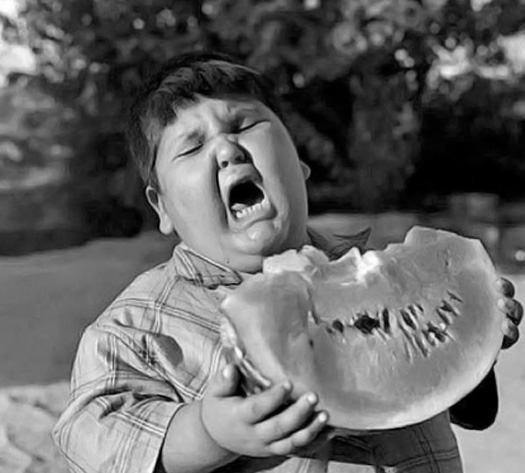
In the pantheon of taboo subjects, none is more difficult to address (or more potently visual) than obesity. It's at once a stark reality and a cautionary tale, associated with serious economic consequences and no shortage of health complications — yet remains, to many, pure fodder for comedic opportunism. From Fats Waller to Fatty Arbuckle, Chris Farley to John Candy to a host of self-anointed celebrities, the public at large has been groomed to laugh at fat people, many of whom claim that they can't help being fat.
What do we talk about when we talk about fat?
It used to be that we considered a fat baby a healthy baby, but today it's no longer actually clear what actually constitutes fat. In the United States, the fight against childhood obesity may gain some traction now that it is being spearheaded by America’s First Lady, yet apparently what we define as hunger (respectfully referred to as “food security” by the Department of Health and Human Services) persists — even as the classic profile of malnutrition does not.
Not to overstate this, but here in the land of plenty, a bloated belly is a bloated belly.
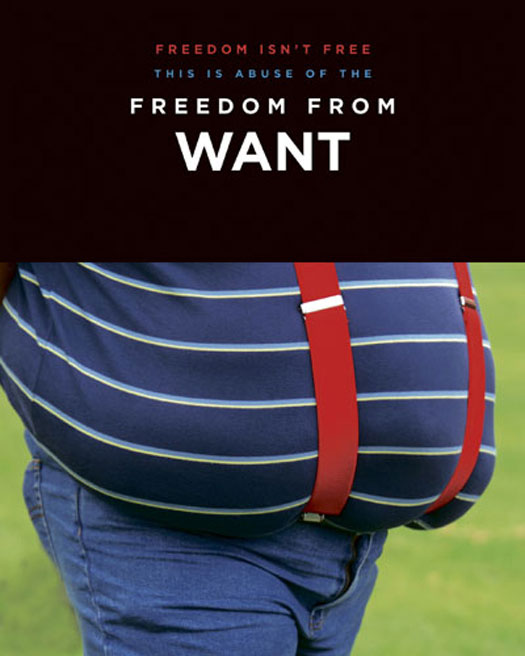
Increasingly however, this isn’t only an American problem. As early as 1999, the United Nations reported that obesity was on the rise in developing countries, including Asia, Latin America and Sub-Saharan Africa. The proliferation of so much fast food in densely urban places like Hong Kong and Shanghai leads to both inactivity and increased snacking. “Chunky sturdy kids are not the problem,” notes one Asian news source. "Fatties are.”
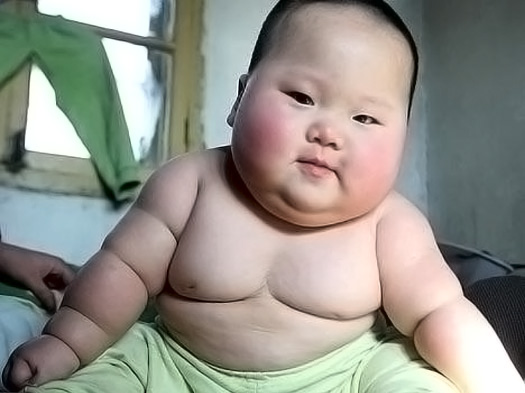
And yet despite such alarming real-world statistics, morbid obesity remains the stuff of comedy. “Fat suit” movies are believed to have originated with the scene in Monty Python’s 1983 The Meaning of Life, in which Terry Jones' chunky gourmand Mr. Creosote consumes an enormous banquet, only to explode, following the meal, when he pops an after-dinner thin mint.

Mr. Creosote from The Meaning of Life, 1983
Since then, box-office stars like Mike Myers, Eddie Murphy and even Gwyneth Paltrow have followed. (Not long ago, producers from Entertainment Tonight sent two fat-suit covered size-2 models out into the streets with a hidden camera to capture the public’s response to their beefed-up size.) But perhaps the greatest visual satire lies in Pixar’s dystopian Wall-E, a world where bloated humans navigate in automized easy chairs, with supersized disposable cups permanently poised for instant beverage refills. Sure, they’re animated figures, one step removed from reality by virtue of being in a cartoon — yet somehow, the fact that they’re caricatures makes them no less menacing.
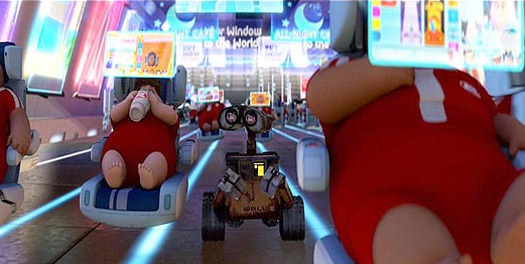
Wall-E, Pixar, 2009
Television programmers take the opposite position, experimenting with different formulas for drawing viewers not with comedy so much as with reality, from ABC’s allegedly positive "Huge", starring Nikki Blonsky, who heads an entirely plus-size cast; to the Style Network’s allegedly inspirational “Kirstie Alley’s Big Life" and Fox's "More To Love." But by far the biggest draw remains NBC's “The Biggest Loser" — and it is likely that the staggering before-and-after photos are the real draw here, as they provide incontestable visual evidence of what is, in fact, startling physical — ergo visual — change.
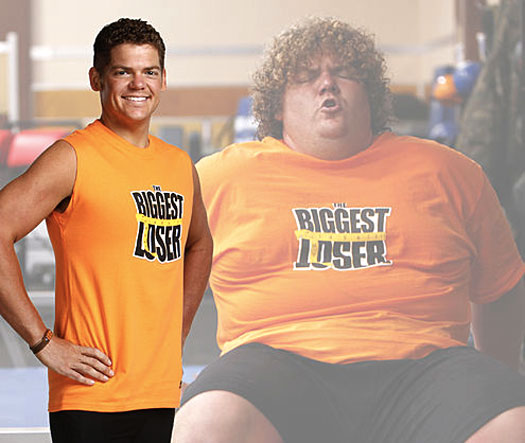
Contestant from the Biggest Loser
Such comedic efforts pale by comparison to YouTube, of course — an environment in which censorship is rare, and where such burlesque fits of absurdity have achieved significant scale without the use of fat suits. More than 50,000 people have seen Fat Lady Exercising, while some 150,000 have watched Fat People Falling Down.
And so it is, too, with consumer magazines who provide an eager public with tales of celebrity weight loss and the secrets — renewed love, religious devotion and questionable pharmaceuticals foremost among them — behind extraordinary visual displays of bodily redemption. If shapeshifting has its roots in classic mythology, then it should come as no surprise that weight loss entices viewership through the promise of precisely this: eat less, exercise more, and then show off your new-and-improved physique on national television where you will be publically humiliated if you fail to change. If, on the other hand, you do succeed in shapeshifting to a slimmer you, you'll win cash and prizes.
A simple enough equation, except that advocates of the so-called fat acceptance movement — which, incidentally, has been around for some forty years — vehemently oppose such practices. "Fat acceptance isn't a rebellion against The Biggest Loser … it's about social justice and about valuing human diversity. Fat acceptance is not about trying to be fat. It's about not hating our already fat bodies, and about fighting anti-fat stereotypes, prejudice and discrimination.”
Their premise — and there is an entire portion of the blogisphere known as the “fatosphere” where they write quite persuasively on this topic — is that all body types should be accepted. To the extent that diversity rests on tolerance, they are right: and if you believe, as they do, that obesity — like race or religion or infirmity — is not a choice, then we should all abstain from fat-suit wearing ridicule and finger-pointing judgment, period. This includes FatBooth, an iPhone app that lets you retrofit a portrait into a quick (but highly realistic) double-chin. It's silly and easy and provides a quick fix of what is essentially Schadenfreude: Thank God I don't really look like that, you tell yourself. It's harmless, too: if you shake the phone, you lose those unwanted pounds in a flash. Think it’s ever really that easy? Fat chance.
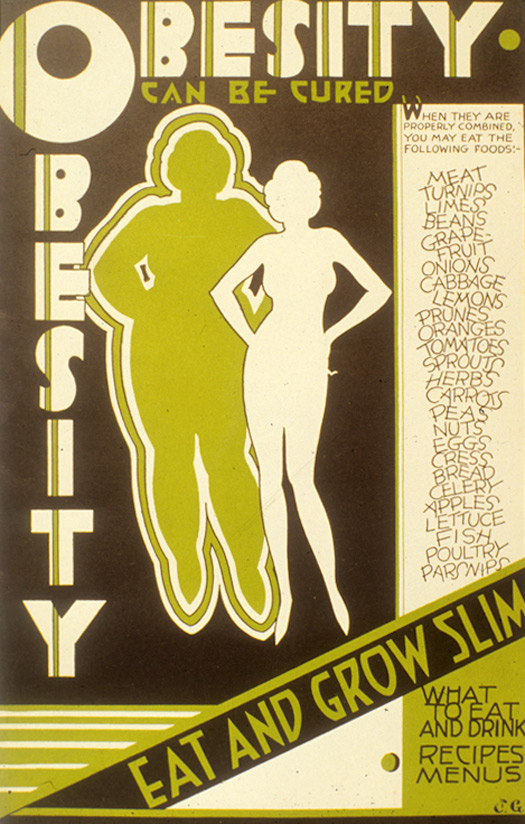
This is part two of a two-part essay on the visual nature of body image. Part one, which looks at eating disorders including anorexia nervosa, appeared earlier this week.
Such comedic efforts pale by comparison to YouTube, of course — an environment in which censorship is rare, and where such burlesque fits of absurdity have achieved significant scale without the use of fat suits. More than 50,000 people have seen Fat Lady Exercising, while some 150,000 have watched Fat People Falling Down.
And so it is, too, with consumer magazines who provide an eager public with tales of celebrity weight loss and the secrets — renewed love, religious devotion and questionable pharmaceuticals foremost among them — behind extraordinary visual displays of bodily redemption. If shapeshifting has its roots in classic mythology, then it should come as no surprise that weight loss entices viewership through the promise of precisely this: eat less, exercise more, and then show off your new-and-improved physique on national television where you will be publically humiliated if you fail to change. If, on the other hand, you do succeed in shapeshifting to a slimmer you, you'll win cash and prizes.
A simple enough equation, except that advocates of the so-called fat acceptance movement — which, incidentally, has been around for some forty years — vehemently oppose such practices. "Fat acceptance isn't a rebellion against The Biggest Loser … it's about social justice and about valuing human diversity. Fat acceptance is not about trying to be fat. It's about not hating our already fat bodies, and about fighting anti-fat stereotypes, prejudice and discrimination.”
Their premise — and there is an entire portion of the blogisphere known as the “fatosphere” where they write quite persuasively on this topic — is that all body types should be accepted. To the extent that diversity rests on tolerance, they are right: and if you believe, as they do, that obesity — like race or religion or infirmity — is not a choice, then we should all abstain from fat-suit wearing ridicule and finger-pointing judgment, period. This includes FatBooth, an iPhone app that lets you retrofit a portrait into a quick (but highly realistic) double-chin. It's silly and easy and provides a quick fix of what is essentially Schadenfreude: Thank God I don't really look like that, you tell yourself. It's harmless, too: if you shake the phone, you lose those unwanted pounds in a flash. Think it’s ever really that easy? Fat chance.

This is part two of a two-part essay on the visual nature of body image. Part one, which looks at eating disorders including anorexia nervosa, appeared earlier this week.
